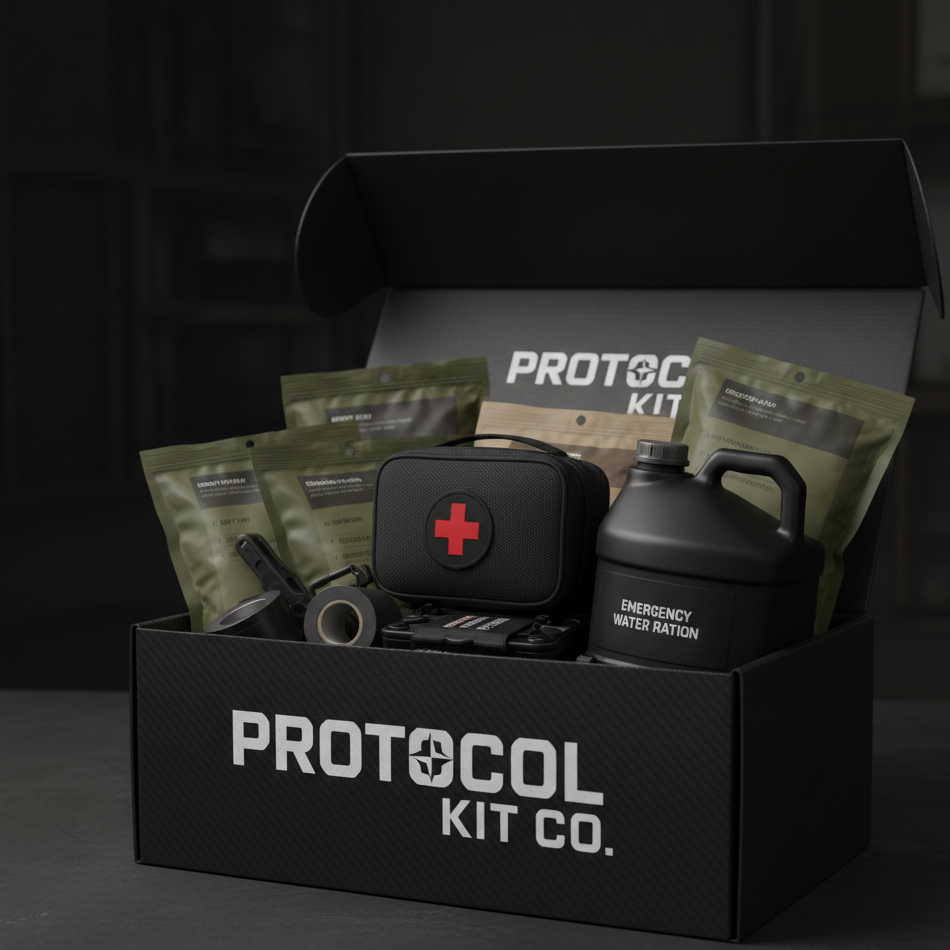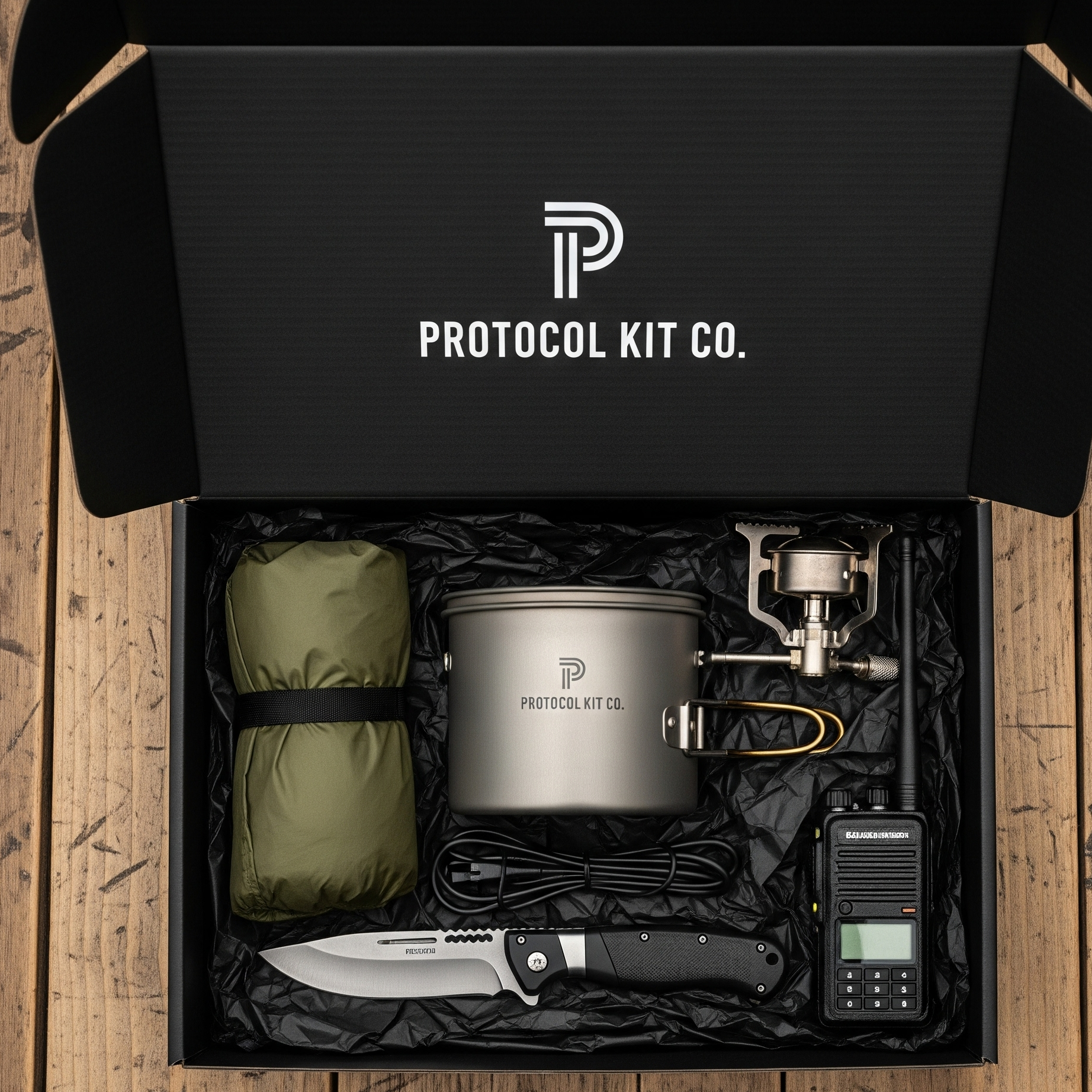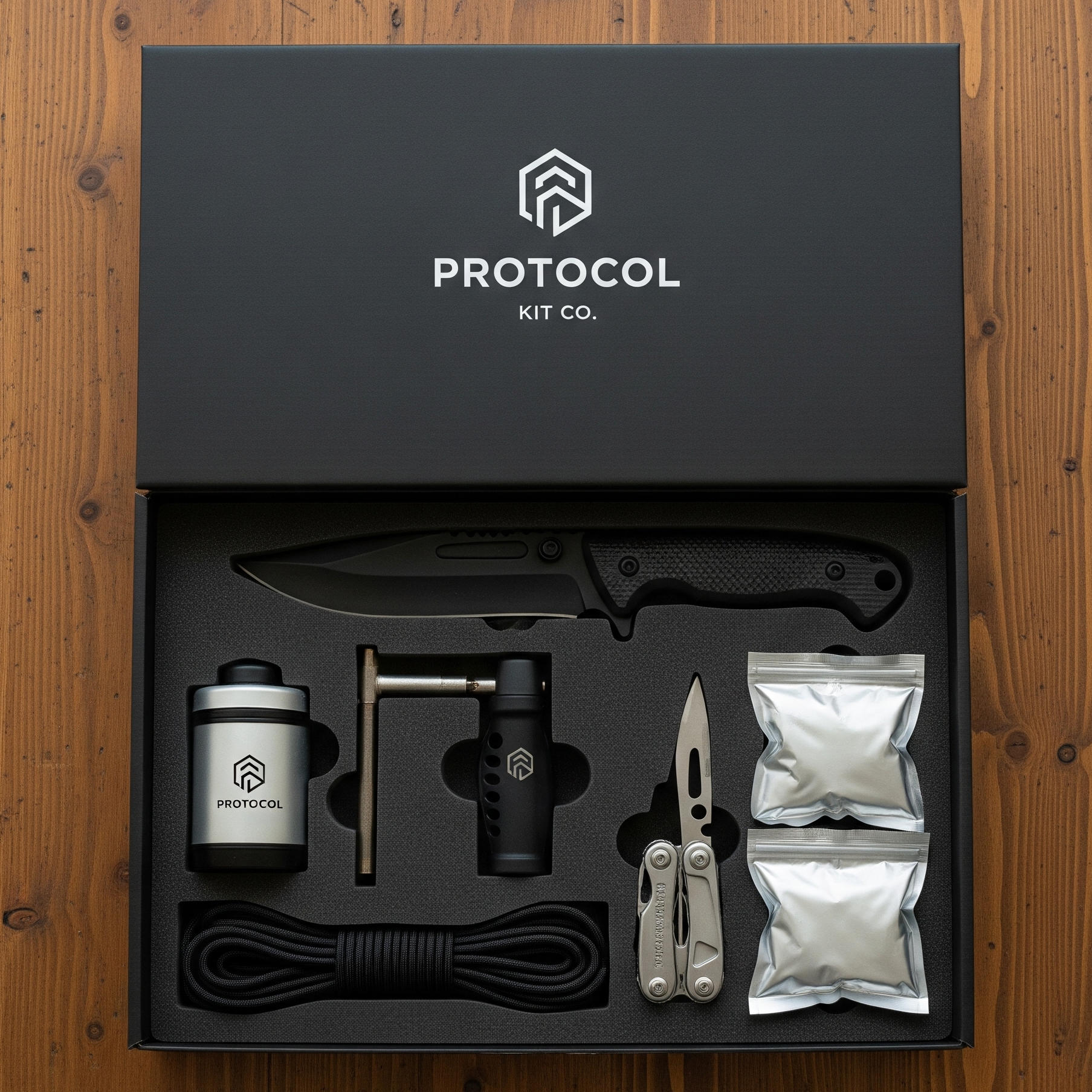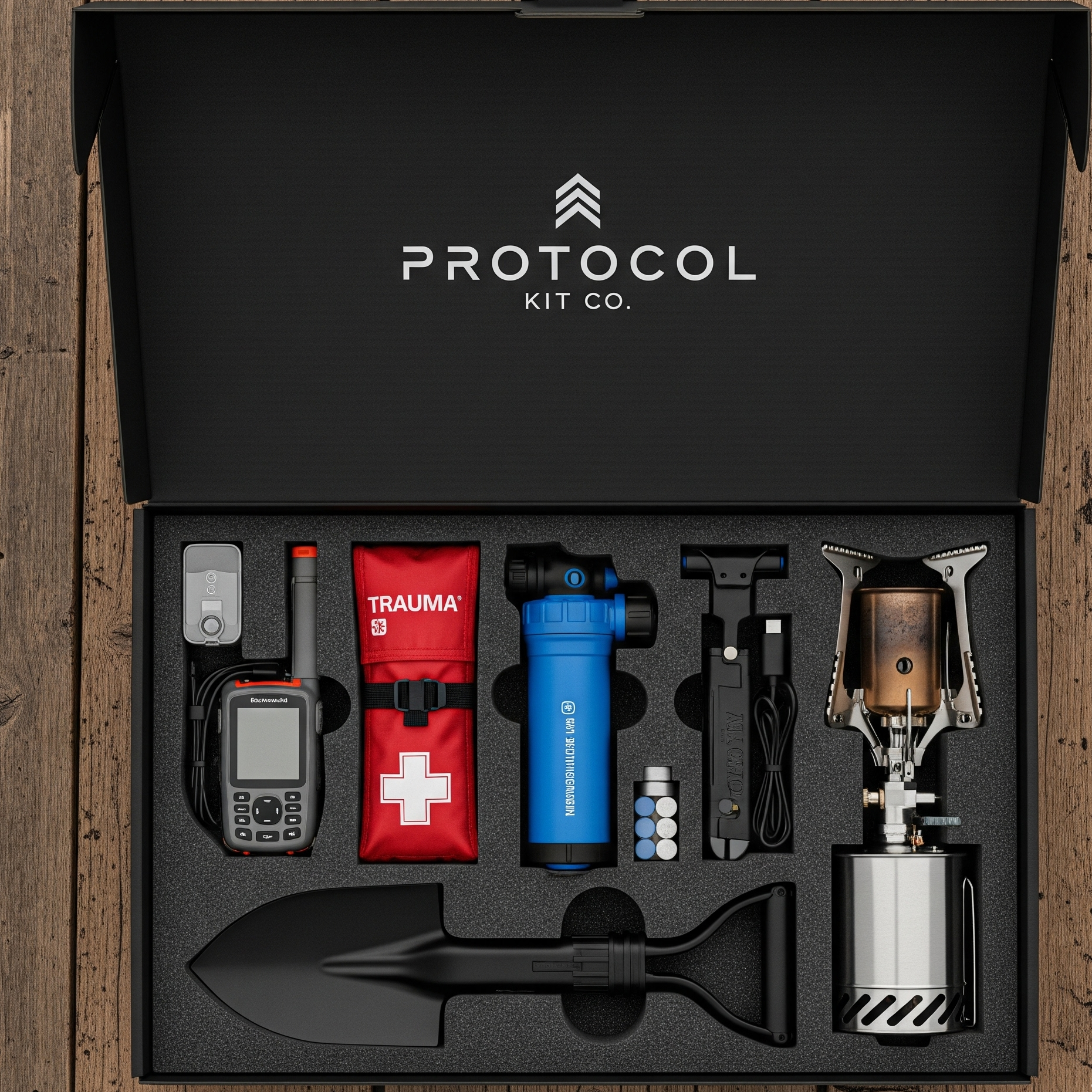Systematic Readiness vs. Random Acquisition in Emergency Preparedness
Abstract
In the rapidly growing preparedness market, consumers are faced with two dominant models for acquiring survival gear: the traditional subscription box, which delivers a random assortment of individual items, and the systematic kit, which builds a complete, integrated emergency system over time. This case study examines the cognitive and practical advantages of the systematic approach, as embodied by Protocol Kit Co., over the random acquisition model offered by competitors . By analyzing principles of cognitive load theory, decision fatigue in crisis scenarios, and the true cost of achieving comprehensive readiness, this study demonstrates that a structured, protocol-based system is a more effective, reliable, and ultimately more valuable methodology for emergency preparedness.
1. Introduction: The Paradox of Choice in Survival
The modern preparedness landscape is saturated with options, promising subscribers a monthly delivery of novel survival gadgets and tools. This model, popularized by companies thrives on the appeal of discovery and the steady accumulation of gear. However, this approach creates a significant gap between owning gear and being prepared. An emergency situation is the ultimate test of a system's effectiveness, not the quantity of its individual components. A collection of disparate, unfamiliar items can create confusion, increase stress, and lead to catastrophic failure when time is critical.
Protocol Kit Co. was founded on a contrasting principle: that true preparedness is not a collection, but a protocol. It is an integrated system where every component has a purpose, a place, and is introduced in a logical sequence that builds both the user's kit and their familiarity with it.
2. Cognitive Load & Decision Fatigue: The Enemy of a Crisis Response
In a high-stress emergency, the human brain's capacity for complex decision-making is severely diminished. The goal of any preparedness plan should be to reduce the mental burden on the individual, not add to it.
-
Cognitive Load Theory: This principle of instructional design posits that the human brain has a limited working memory for processing new information. Overwhelming this capacity hinders learning and performance (Sweller, 1988). The random-kit model inherently maximizes cognitive load. The user is presented with a constant stream of novel items, each with its own unique function, maintenance requirements, and use case. In a crisis, the user must recall how to use dozens of unrelated items, determine which is appropriate for the situation, and locate it within a disorganized collection.
-
Decision Fatigue: Making numerous decisions, even small ones, depletes mental energy and degrades the quality of subsequent choices (Baumeister, 2003). A random kit forces a continuous series of micro-decisions under duress: Which knife should I use? Where did I pack the fire starter? Do I have the right cordage for this task? Protocol Kit Co.'s systematic approach is designed to eliminate this fatigue. By organizing gear into pre-defined modules (e.g., Fire, Water, Shelter, Medical), the system offloads the cognitive burden. The user doesn't need to decide what to grab; they simply grab the "Fire Kit." This pre-planning is critical for effective action when under stress.
A study on judicial rulings found that judges were significantly more likely to deny parole later in the day, a phenomenon attributed to decision fatigue from a long session of hearings (Danziger et al., 2011). If routine legal decisions are so profoundly affected, it is reasonable to conclude that life-or-death survival decisions would be even more compromised by a disorganized and unfamiliar collection of tools.
3. The System vs. The Assortment: Practical Application
The core difference between the two models lies in their practical utility.
-
The Random-Kit Model: Over a year, a subscriber to a service like random survival box will receive approximately 48-60 individual items. This assortment may include multiple knives, various fire starters, and assorted gadgets. However, it typically lacks the foundational, high-cost items essential for a complete system, such as a quality backpack, a comprehensive medical kit, a reliable water filtration system, or a durable shelter. This creates what is known in enthusiast communities as "Gear Acquisition Syndrome" (GAS)—the compulsive urge to acquire more equipment, mistaking the act of buying for the process of becoming more skilled or prepared (E. Smith, Personal Communication, 2023). The user is left with a drawer full of gadgets but no actual, deployable survival kit.
-
The Protocol Kit Co. Model: Protocol Kit Co.'s subscription is a deliberate, multi-part delivery of a single, cohesive system. The first delivery might establish the foundation—the backpack and organizational pouches. Subsequent deliveries provide the self-contained modules that fit within that system. After one year, the customer doesn't have 50 random items; they have one fully integrated, organized, and complete survival system. This "system of systems" approach is a core tenet of professional emergency management, where the interoperability and relationship between components are valued over the components themselves (National Research Council, 2011).
4. Cost Analysis: The Hidden Price of "Random"
While the monthly cost of a random-item box may appear lower, a closer analysis reveals significant hidden costs.
Achieving a state of genuine, comprehensive readiness with a random-kit model requires a significantly higher total investment. The user must supplement their subscription with hundreds of dollars in foundational gear that the service fails to provide, negating any perceived monthly savings.
5. Conclusion
The subscription box model offers novelty and the excitement of discovery, but it fails to deliver on the fundamental promise of preparedness. It encourages the accumulation of gear over the development of a reliable system, increases cognitive load in a crisis, and hides the true cost of becoming fully equipped.
Protocol Kit Co.'s systematic approach directly addresses these failings. By providing an integrated, organized, and complete system through a structured subscription, it reduces decision fatigue, enhances usability under stress, and provides a clear, cost-effective path to genuine readiness. In a crisis, success depends not on what you have, but on how well your system works. Protocol Kit Co. doesn't just sell gear; it delivers a protocol for survival.
Citations
-
Baumeister, R. F. (2003). Ego depletion and self-regulation failure: A resource model of self-control. Alcoholism: Clinical and Experimental Research, 27(2), 281-284.
-
Danziger, S., Levav, J., & Avnaim-Pesso, L. (2011). Extraneous factors in judicial decisions. Proceedings of the National Academy of Sciences, 108(17), 6889-6892.
-
National Research Council. (2011). A Framework for Understanding Systems Engineering. The National Academies Press.
-
Sweller, J. (1988). Cognitive load during problem solving: Effects on learning. Cognitive Science, 12(2), 257-285.
-
Smith, E. (2023). Personal communication on "Gear Acquisition Syndrome" in online preparedness forums.





